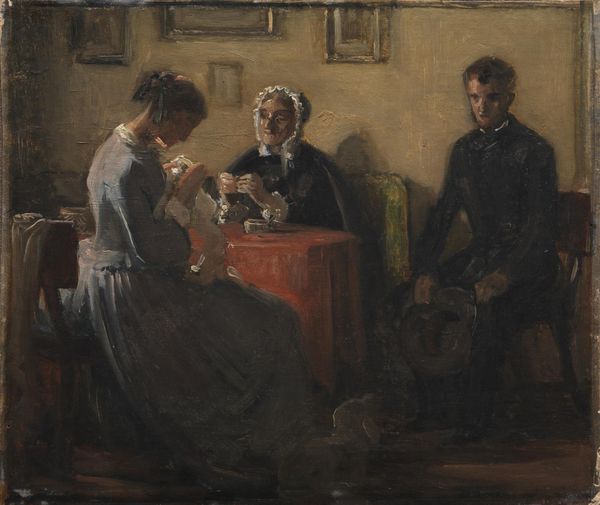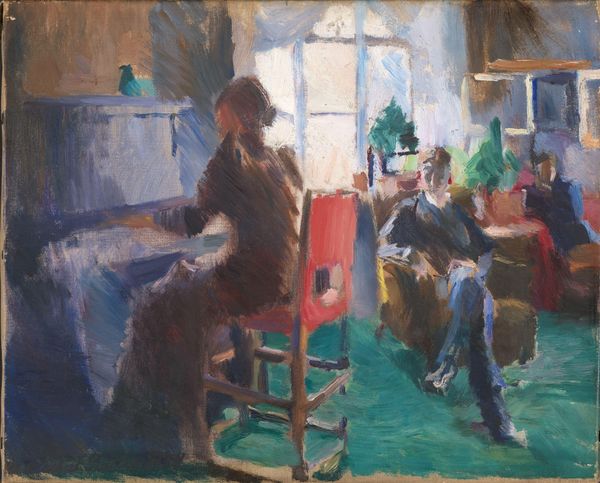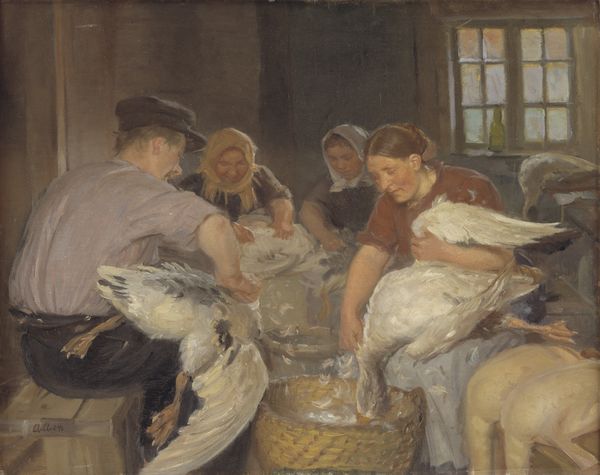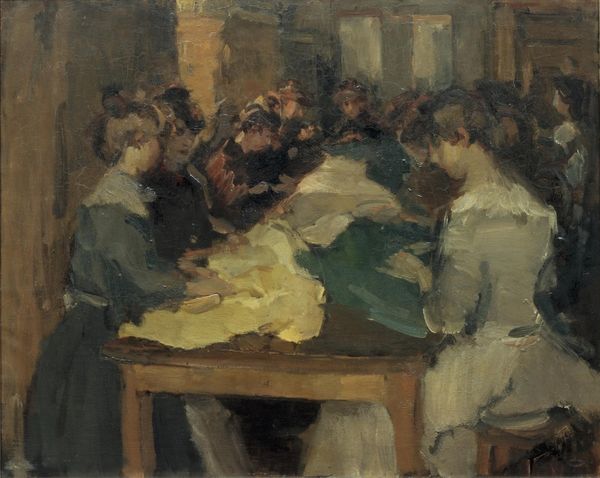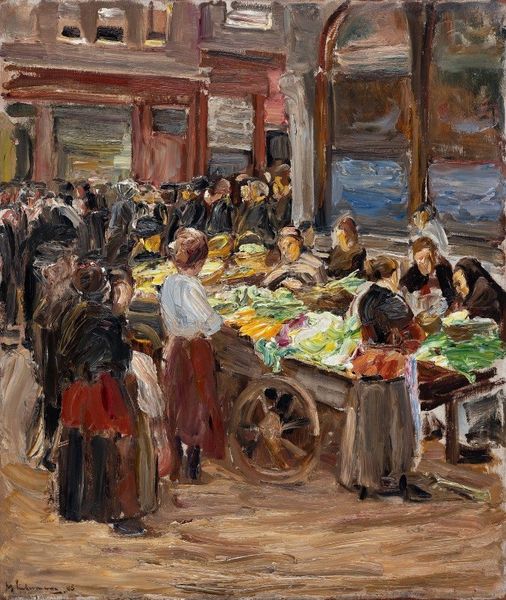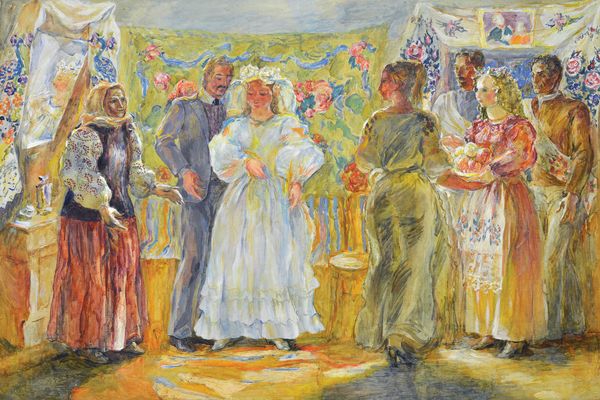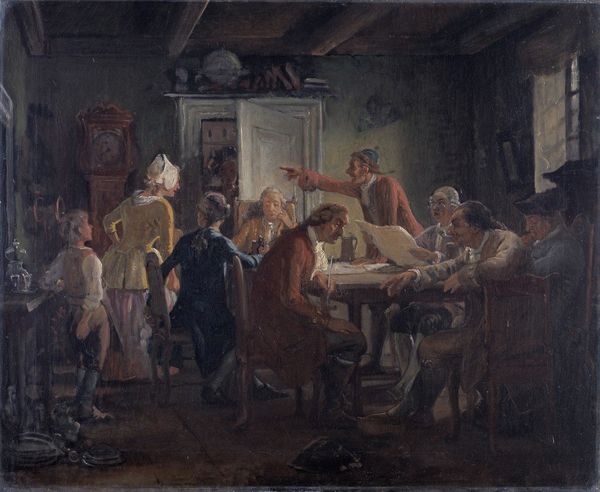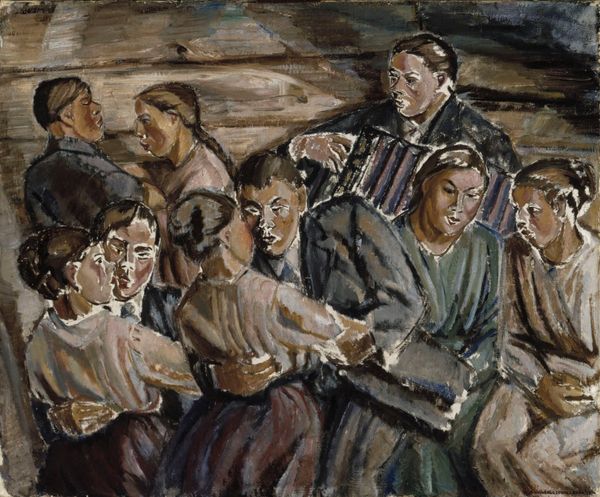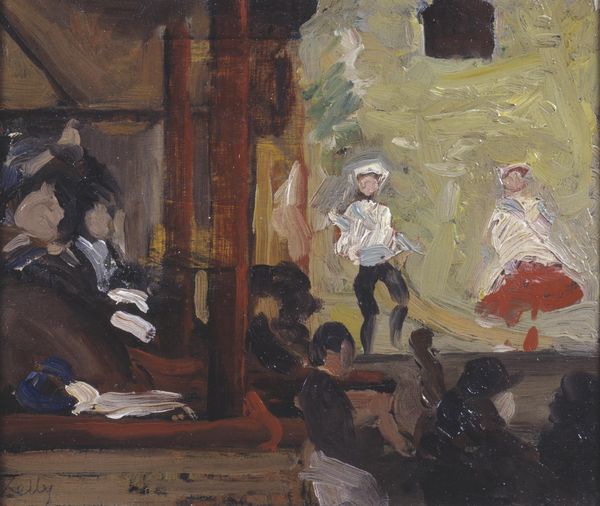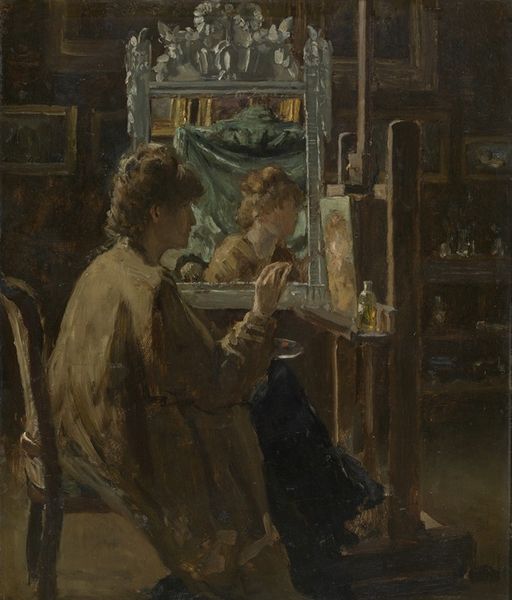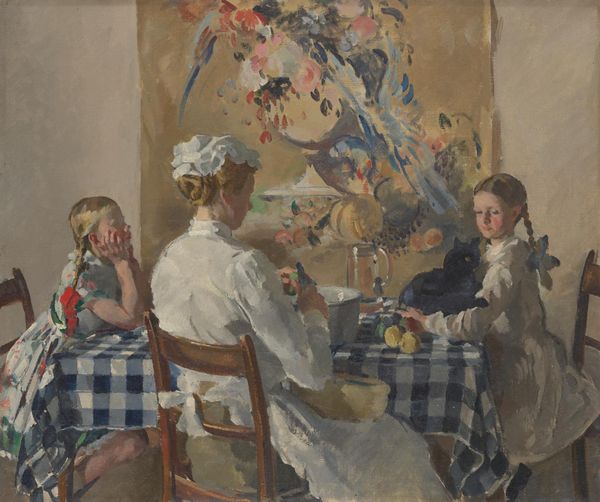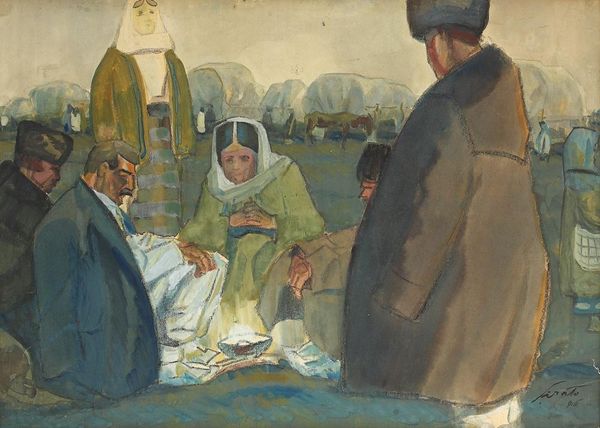
Dimensions: 144.3 cm (height) x 153.7 cm (width) (Netto), 158.6 None (height) x 174 None (width) x 5.8 None (depth) (Brutto)
Curator: Here we have Christian Krohg's "In the Tub," painted in 1889. It's currently held at the SMK, the Statens Museum for Kunst. What's your first take on this piece? Editor: Intimate, wouldn’t you say? It’s bathed in soft light, focuses on the act of caring, but there’s also something a little melancholy in the subjects' expressions. Curator: Yes, there’s that stillness. Krohg was very interested in depicting everyday life, often focusing on labor. Look closely at the application of the oil paint. See how impasto highlights textures – the cloth, the water, the skin of the baby. These tactile qualities emphasize the physical work involved in domestic labor, it isn’t a passive task. Editor: I agree. And it comes at an interesting time in the history of family and medicine; infant mortality rates were still shockingly high in many parts of Europe. The ritual of bathing wasn’t just about hygiene; it was bound up with anxieties surrounding health and survival. This image shows both intimacy and fear. Curator: Precisely! Krohg’s realism aimed to capture not just the visible, but also the lived experiences and socio-economic contexts of his subjects. The domestic sphere was just as much a site of production and struggle as the factory floor, for women particularly. The simple wooden tub, the aprons they are wearing – everyday items elevated through art. Editor: And consider the context of where the piece resides today. This isn’t just any snapshot of motherhood; its display in the National Gallery gives it significant cultural weight. This ordinary act of labor enters the halls of 'high art.' This placement itself can change what it is about, turning it from a fleeting observation into an image that signifies idealized family, even tradition. Curator: Right, and how do museums influence the interpretation of art through display? What stories do institutions choose to tell, and whose experiences do they elevate? Krohg gave weight to what’s inside. Editor: An act of reclamation! Art in public institutions has the power to rewrite narratives. So, whether viewed for its detailed surfaces or the complex social history it illuminates, "In the Tub" invites us to reflect on the layers of labor that shape our world.
Comments
No comments
Be the first to comment and join the conversation on the ultimate creative platform.
